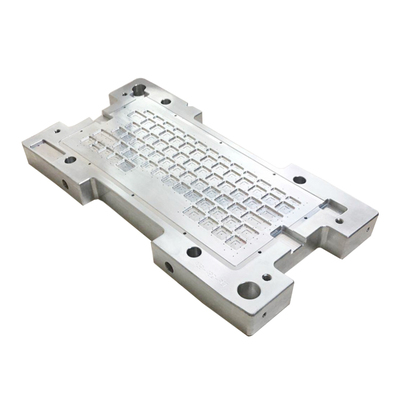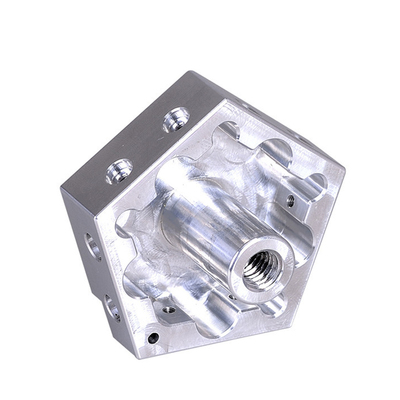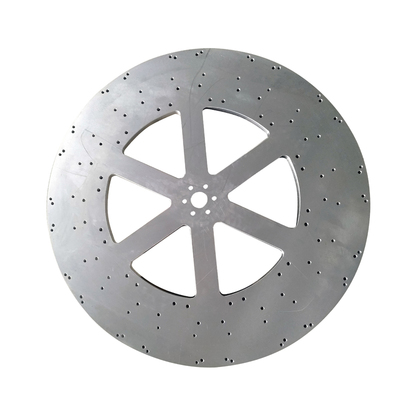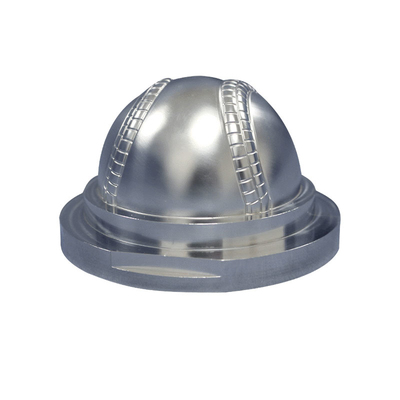What Is Modified Plastic
The concept and development of modified plastics
Concept: Plastic polymers are made into plastic polymers that meet certain requirements by adding functional additives, additives, fillers, etc., or by blending different polymers, using physical methods, chemical methods, or organically combining different methods through mechanical equipment Things.
Modification technology: mainly use blending, filling, toughening, reinforcement, compatibility, flame retardant, alloying and other technologies to improve the flame retardancy, aging resistance, mechanical properties, electrical, magnetic, optical, and thermal aspects of the resin Characteristics.
Based on the engineering of general plastics and the high performance of engineering plastics, the production process of modified plastics also introduces cutting-edge science such as nanotechnology, condensed matter physics, energy conservation and environmental protection, which further increases the breadth and depth of the application of plastic products and becomes oil-saving. Favorable means of resources, reducing production costs, and increasing economic benefits. Its applications cover traditional industries such as office equipment, household appliances, electronic and electrical, and high-tech fields such as rail transit, precision instruments, aerospace, and new energy.
From the comparison of the needs of traditional industries and high-tech, the needs of traditional application fields pay more attention to the cost of products and consistency between different batches, while the high-tech field focuses on whether the performance of the product meets the design needs. At present, there are hundreds of companies engaged in modified plastics in China with tens of thousands of employees. The development of markets such as automobiles, household appliances, and lighting has made the consumption of modified plastics increase year by year, with an average annual growth rate of more than 15%.
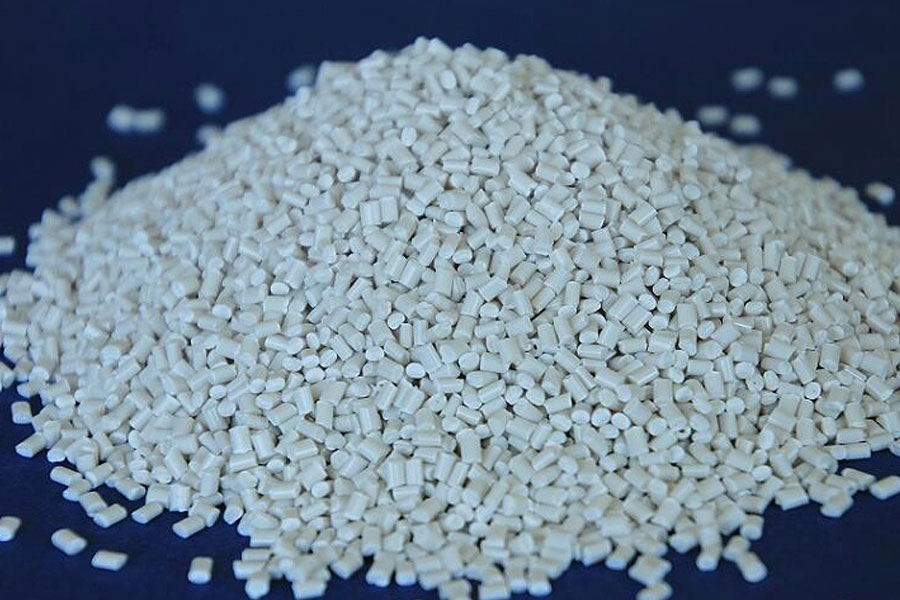
Hot spot technologies and principles of plastic modification
Although modified plastics can be realized by a variety of methods, the most commonly used manufacturing process today is still filling plastics or composite pressing alloy materials. The production process mainly involves long glass fiber reinforcement technology, blending and alloying technology, and nanotechnology.
1. Long glass fiber reinforced technology
Long glass fiber reinforcement technology is to incorporate glass fibers into plastics, thereby gaining advantages over ordinary metals in terms of strength, toughness, weight, and price. Long glass fiber reinforced technology is mainly used in the development of automobiles. The high-performance modified plastics obtained can replace some mechanical parts of automobiles, so that automobiles can obtain lighter weight and cost-effective under certain conditions of strength and usability.
2. Blending and alloy technology
Blending and alloying technology refers to mixing two or more polymers in a certain proportion, and then mixing them for gold by chemical, physical and other methods. Modified plastics obtained through this technology often have great improvements in processing properties, mechanical properties, heat resistance, flame retardancy, etc., and are one of the most active varieties in the plastics industry. They are widely used in precision instruments and office equipment. , Packaging materials, building materials and other fields.
3. Filling and nanotechnology
Nanotechnology can not only help plastic products have stronger toughness and mechanical properties, but also can give plastics new properties and broaden the application fields of plastics. For example, various nano-inorganic powder materials modified plastics have outstanding anti-aging properties.
4. Degradable technology
Plastics has always been a problem in environmental governance. It is difficult to degrade in nature, so it exists in the soil for a long time. Nowadays, the concept of environmental protection is deeply rooted in the hearts of the people, and green and environmentally friendly modified plastic products such as starch plastics and degradable plastics have become new hotspots.
The main points of attention of plastic modification recycling technology
1. Compatibility of recycled plastics
Common recycled plastics are: PVC, PE, PP, HIPS, ABS, AS, PMMA, PET, PBT, PC, PA6, PA66, POM, PPS, high temperature nylon, EVA, TPU, TPE, etc. The compatibility is The principle of similarity and compatibility. For recycled materials, the key is to grasp which ones can be properly mixed and which ones are not well mixed. The following details the key points that need to be paid attention to in the modification of different types of recycled plastics:
PE, PP type
The principle should be distinguished between HDPE (low pressure PE), LDPE (high pressure PE), and LLDPE (linear). There are relatively few problems with the mixed use of LDPE and LLDPE, while the mixed use of the two and HDPE has more problems in production;
For HIPS, ABS, AS, PMMA, it cannot contain PE material, and for nylon, which contains some PE, it will help solve its water absorption, easy nailing and other properties;
For PP, in the recycling and regeneration modification, part of LDPE and LLDPE can be appropriately contained.
PVC category
Mixed with part of ABS and EVA can increase its toughness. Therefore, when producing PVC, ABS, EVA, etc. can be appropriately contained. In principle, except for PVC/ABS alloy, other materials cannot contain PVC.
ABS type
For HIPS and ABS, there is no problem with the compatibility between the two. The key is that the mixed toughness of the two is greatly reduced. It is difficult to improve the impact even if the toughening agent is added. Unless the third component is added for alloying, the third component can be added. Resilience, so the two must be separated and not mixed together;
ABS and AS can be completely mixed, the key is to adjust the ratio according to its toughness requirements;
ABS, AS and PMMA can be mixed together to make high-gloss ABS, or added to acrylic sheets for use.
PA category
PA6 and PA66 can be completely mixed to be modified into nylon engineering materials;
For high-temperature nylon, avoid mixing in PA6 or PA66. Because high-temperature nylon has a relatively high melting point, it cannot melt at all at the processing temperature of PA6 or PA66.
POM class
POM cannot be mixed with other materials in principle, because its processing temperature is relatively narrow and easy to degrade. For POM reclaimed nozzles, TPU tougheners can be used to improve its toughness.
2. Alloying of recycled plastics
Regarding recycled plastics, some parts cannot be fully separated, and we can also use the properties of recycled plastics to make plastic alloys from these recycled materials or recycled materials that cannot be separated to produce modified materials that meet the requirements. Therefore, to know these, it is necessary to understand the commonly produced plastic alloys and their commonly used compatibilizers.
3. Reinforcement of recycled plastics
For the reinforcement of recycled plastics, glass fiber reinforcement is often mentioned, but it is relatively rare for recycled plastics such as carbon fiber and steel fiber. For glass fiber reinforcement, the following points must be done:
PE/PP alloy
These two materials are inherently compatible. For PE in the case of insufficient rigidity and heat resistance, you can consider adding part of PP appropriately (subject to experimentation);
For the frequent addition of PE in PP modification, the main purpose is to improve its toughness and reduce the amount of toughening agent POE;
Regarding the cost of recycled PE and PP, recycled EVA, POE and polyolefin elastomers can be selected for toughening.
PA/PE alloy
PA/PE alloy, this type of alloy can not only reduce the water absorption of nylon, but also improve the flexibility of reinforced nylon. This type of recycled material market is the most common type of composite film. According to the different nylon content, the application direction is different. For the nylon content less than 30%, it can be considered to be consumed in PE. For the nylon content more than 30%, in principle, Ideal for use in nylon products. For example, the recycled composite membrane material with a nylon content of 50%, in the nylon 6 reinforced 30% glass fiber, adding no more than 20% of the recycled composite membrane material can achieve 30% enhancement of the physical properties with the new material nylon 6.
ABS/PC alloy
ABS/PC alloy has good mechanical strength, toughness and flame retardancy, and is widely used in building materials, automobiles and electronic appliances. This type is the type that is used in the market and has a large number of regeneration. Commonly used compatibilizers such as ABS, AS, PS, etc. are grafted with maleic anhydride; acrylate copolymers, etc. The toughening agents are mainly MBS and acrylate copolymers.
PC/PBT alloy
PC/PBT alloy has high strength and high toughness, and is widely used in automobiles, electrical appliances, sports goods and other parts. For commonly used compatible toughening agents, you can refer to those used in PC and PBT, such as methyl methacrylate grafts, acrylate copolymers, and so on.
ABS/PMMA alloy
ABS and PMMA alloy, ABS/PA alloy is a material with good impact resistance, chemical resistance, heat resistance and fluidity. It is used in automotive interior parts, instrument panels, power tools, sports equipment, lawn mowers, snow blowers and other industries part.
For commonly used compatible toughening, you can refer to ABS and nylon, such as ABS-g-MAH, POE-g-MAH, etc.
ABS/PBT alloy
ABS/PBT alloy has good heat resistance, strength and fluidity, and is suitable for interior and exterior parts of automobiles, exterior parts of motorcycles, and appearance parts of electrical appliances. For commonly used compatible toughening agents, you can refer to those used in ABS and PBT, such as methyl methacrylate grafts.
ABS/PCTA alloy
ABS/PCTA (often referred to as low temperature PET) alloys have good compatibility between the two. The toughening compatibility system can be appropriately considered based on the ABS/PBT alloy. Many of these alloys are sold as ABS in the market.
ABS/PET alloy
ABS/PET alloy, the key to this type of alloy is to handle the crystallinity of PET. While considering its compatibility and toughening, it must also consider its crystallinity. For example, the toughening compatibility system can consider methyl methacrylate grafting. It is necessary to select appropriate nucleating agent and lubricant in consideration of its processability.
HIPS/PPO alloy
HIPS and PPO alloys. The two alloys can be mixed in any ratio. The way to judge the PPO content can be through test analysis, or through simple heat distortion temperature. For example, the heat distortion temperature of 30%HIPS is about 145 degrees ( Pure PPO is about 190 degrees).
To deal with the surface bonding of glass fiber and plastic, one is to add a coupling agent for surface treatment, such as PP plus glass fiber, you can add a coupling agent KH-550, etc.; the other is to add a compatibilizer for surface connection treatment, such as PP plus Glass fiber can be added with PP-g-MAH (PP grafted maleic anhydride) and so on.
According to the strength requirements, the glass fiber with high strength requirements is as thin as possible, such as the common glass fiber 988A, if it is not emphasized, it is generally 14μ, and the strength of 10μ-12μ will be higher. However, it is not as fine as possible. The smaller and finer the same conditions, the more difficult it is to cut and disperse. Especially, PP and PE with low viscosity are more difficult to cut, which sometimes leads to difficulties in stretching.
The main export industries of modified plastics
1. Modified plastics for environmentally friendly passenger transport leading vehicles
In a car, there are many parts that need to use modified plastics, such as bumpers, fuel tanks, steering wheels, interior trim, etc. The weight of modified plastics used in each car accounts for about 7% to 10% of the car's own weight, ranging from 40 kg to 90 kg. The proportion of modified plastics used in automobiles in developed countries such as the United States, Germany, and Japan is between 10% and 15%, and some are even as high as 20%. For example, Audi A2 cars, the total weight of plastic parts has reached 220 kg, accounting for 24.6% of its own weight. .
It can be seen that modified plastics have a huge market in the field of automobile manufacturing.
In the lightweight technology, carbon fiber reinforced thermoplastic composites (CFRTP) prepared by combining the advantages of engineering plastics with corrosion resistance, low specific gravity, impact resistance, easy molding, and reusability, have been prepared due to their excellent performance. Widely used in the automotive field, it can replace parts made of traditional metal materials and glass fiber reinforced materials, such as automotive front-end modules, engine periphery, body, seat frame, battery bracket, power battery pack shell, etc. For example, the carbon fiber-reinforced PA series developed by Jinyang New Materials has an obvious weight reduction effect, which can achieve a weight reduction of 10%-20%.
In addition to lightweight materials, environmentally friendly materials such as spray-free and low odor have also begun to be widely used in the automotive field. Coatings contain a large amount of VOC (volatile organic compounds). Spray-free materials are environmentally friendly materials that can replace traditional coatings. Favored by policies and the market, they are now a popular automotive material that can be used in automotive control panels and grids. Parts such as grilles, mudguards, bumpers, and rearview mirror housings can also present a metallic texture.
2. Rail transit's demand for modified plastics
The development of rail transit in China is advancing as fast as the speed of China's high-speed rail. The increasing localization rate of high-speed rail and high-speed trains, as well as the improvement of ride comfort, undoubtedly put forward higher performance requirements for domestic materials.
In the field of modified plastics, polyamide composite materials have the characteristics of high elasticity, self-lubrication, wear resistance, impact resistance, corrosion resistance, etc., which can meet the performance requirements of bearings and play a role in the safety, high speed, and heavy load of railway transportation. play a key role in.
For example, SKF of Sweden uses 25% glass fiber reinforced PA66 composite material to make bearing cages on passenger car bearings and locomotive traction motor bearings. Domestically developed PA6/PA66, such as Jin Yang, has the characteristics of high elasticity, impact resistance, corrosion resistance, easy processing, and light weight. It can be used for rolling bearing cages, gauge baffles, gauge blocks, insulating gaskets, pipe sleeves, etc. Parts.
3. The proportion of domestic aviation materials is gradually increasing
China’s aviation industry has been constrained by others and relied on imported materials. For a long time, domestic material suppliers have been able to produce very few materials that meet aviation performance requirements.
However, with the increasing maturity of domestic aircraft R&D technologies such as C919, Yun-20, and F-20, a series of new materials research and development have been carried out simultaneously in China. More and more technical barriers have been broken, and more and more domestic high-performance materials have begun. Applied to the aviation field. At present, the modified plastics independently developed by our country have the characteristics of high temperature resistance, self-lubrication, earthquake resistance, chemical resistance and wear resistance, etc., and can be used for many parts such as wings, brackets, friction surfaces, radomes and so on. In addition, Machining PEEK composite materials can reduce aircraft weight and have been used in the cabin doors of Airbus aircraft. At present, many domestic suppliers have this technology.
Link to this article: What Is Modified Plastic
Reprint Statement: If there are no special instructions, all articles on this site are original. Please indicate the source for reprinting:https://www.cncmachiningptj.com/,thanks!
 3, 4 and 5-axis precision CNC machining services for aluminum machining, beryllium, carbon steel, magnesium, titanium machining, Inconel, platinum, superalloy, acetal, polycarbonate, fiberglass, graphite and wood. Capable of machining parts up to 98 in. turning dia. and +/-0.001 in. straightness tolerance. Processes include milling, turning, drilling, boring, threading, tapping, forming, knurling, counterboring, countersinking, reaming and laser cutting. Secondary services such as assembly, centerless grinding, heat treating, plating and welding. Prototype and low to high volume production offered with maximum 50,000 units. Suitable for fluid power, pneumatics, hydraulics and valve applications. Serves the aerospace, aircraft, military, medical and defense industries.PTJ will strategize with you to provide the most cost-effective services to help you reach your target,Welcome to Contact us ( [email protected] ) directly for your new project.
3, 4 and 5-axis precision CNC machining services for aluminum machining, beryllium, carbon steel, magnesium, titanium machining, Inconel, platinum, superalloy, acetal, polycarbonate, fiberglass, graphite and wood. Capable of machining parts up to 98 in. turning dia. and +/-0.001 in. straightness tolerance. Processes include milling, turning, drilling, boring, threading, tapping, forming, knurling, counterboring, countersinking, reaming and laser cutting. Secondary services such as assembly, centerless grinding, heat treating, plating and welding. Prototype and low to high volume production offered with maximum 50,000 units. Suitable for fluid power, pneumatics, hydraulics and valve applications. Serves the aerospace, aircraft, military, medical and defense industries.PTJ will strategize with you to provide the most cost-effective services to help you reach your target,Welcome to Contact us ( [email protected] ) directly for your new project.

- 5 Axis Machining
- Cnc Milling
- Cnc Turning
- Machining Industries
- Machining Process
- Surface Treatment
- Metal Machining
- Plastic Machining
- Powder Metallurgy Mold
- Die Casting
- Parts Gallery
- Auto Metal Parts
- Machinery Parts
- LED Heatsink
- Building Parts
- Mobile Parts
- Medical Parts
- Electronic Parts
- Tailored Machining
- Bicycle Parts
- Aluminum Machining
- Titanium Machining
- Stainless Steel Machining
- Copper Machining
- Brass Machining
- Super Alloy Machining
- Peek Machining
- UHMW Machining
- Unilate Machining
- PA6 Machining
- PPS Machining
- Teflon Machining
- Inconel Machining
- Tool Steel Machining
- More Material

